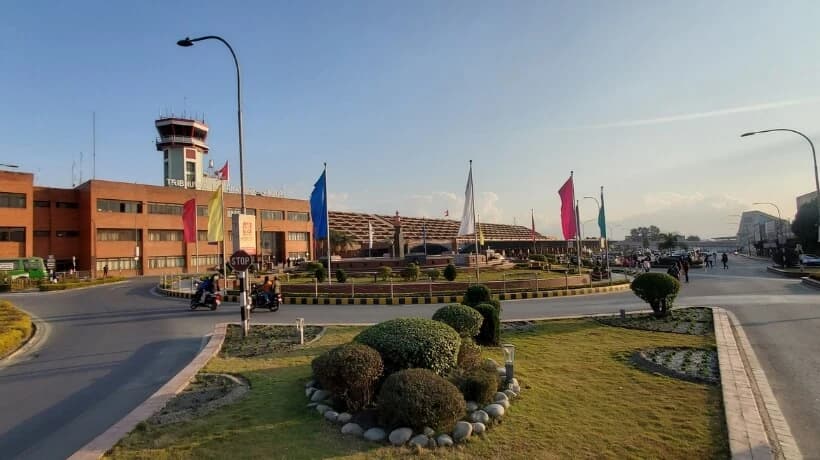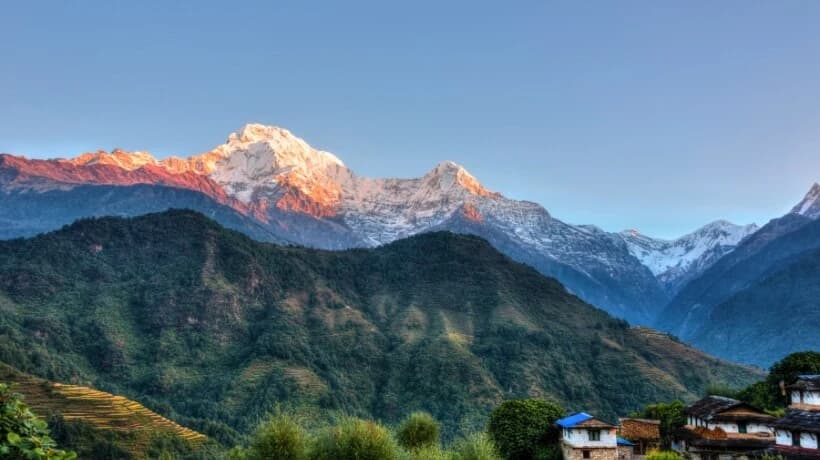Annapurna Circuit Trek is an adventurous odyssey in the mid-hills and high mountains of Nepal. It is a world-famous trekking journey that offers breathtaking mountain vistas and a remarkable getaway in the Himalayas. Travelers get to enjoy the diverse scenery and warm hospitality of Nepali people. If you are looking for adventure backpacking in the Himalayas, then the Annapurna Circuit is one of the best options. Nepal is a very tourist-friendly country and offers a huge range of outdoor activities, so you can easily extend your trip.
Our Annapurna Circuit trek price is affordable, making it more appealing for the lifetime experience you will get!
Highlights
- An adventurous odyssey in the famous Annapurna region of Nepal
- Trek through the Annapurna Conservation Area, discovering many flora and fauna
- Witness the diverse scenery, from sub-tropical forests to semi-arid landscapes
- Meet with various Nepali ethnic groups and enjoy their warm hospitality
- Explore picturesque traditional Nepalese villages, rhododendron and pine forests, and verdant river valleys
- Witness numerous stunning mountain panoramas throughout the trek
- Cross the challenging Thoron La pass and trek past landslide debris to Muktinath Temple
- Walk via the deepest gorge in the world, Kali Gandaki Gorge, to Jomsom
- Trek past white-washed houses, apple orchards, and lush forests
- Enjoy natural hot springs in Tatopani and hike to the Poon Hill viewpoint
- Explore famous Ghorepani and Ghandruk villages
What to expect during this trek?
Annapurna Circuit trek is a very adventurous and immersive journey via picturesque traditional Nepalese villages, rhododendron and pine forests, and verdant river valleys. The trail goes through the Annapurna Conservation Area, home to diverse flora and fauna.
The trail climbs from sub-tropical forests to a semi-arid landscape. So, you can expect diverse scenery along the way. Mountains like Annapurna (8,091 m/26,545 ft),Dhaulagiri (8,167 m/26,795 ft), Hiunchuli,Nilgiri (7,061 m/23,166 ft), Fishtail (6,993 m/22,943 ft), Gangapurna (7,455 m/24,459 ft), Pisang Peak (6,091 m/19,984 ft), and many more are seen during the Annapurna Circuit trekking.
Enjoying the wilderness of the Annapurna region, you will trek and spend nights in lovely mountain villages. Meet with different Nepali ethnic groups like Brahmins, Gurungs, Magars, Thakalis, etc. Get to see the lifestyle of the locals and their practices. Relish their homely cooked food and have memorable interactions
Annapurna Circuit trail
Annapurna Circuit trek route starts from Besisahar (760 m/2,493 ft). It takes 7 to 8 hours of jeep ride to reach here from Kathmandu. From Besishar, the trail goes through small villages and dense forests to Manang (3,540 m/11,300 ft). You will come across beautiful waterfalls and streams on the way.
In Manang, you will take the first acclimatization break. Hike to the Ice Lakes on that day. From here, the trail ascends to Thorong La pass (5,416 m/17,756 ft) via Yak Kharka (4,050 m/14,275 ft). You will follow narrow, steep tracks. The mountain views are phenomenal from the top of the pass.
The next part of the journey takes you to Muktinath Temple (3,760 m/12,623 ft), a significant pilgrimage site in Nepal. From here, you will travel via the deepest gorge in the world, Kali Gandaki Gorge, to reach Jomsom (2,743 m/8,999 ft). The trail from Jomsom onwards takes you via picturesque villages like Marpha (2,650 m/8,694 ft), Kalopani (2,530 m/8,300 ft), and Tatopani (1,190 m/3,904 ft).
Enjoy natural hot springs in Tatopani. Trek from here to Ghorepani village (2,874 m/9,429 ft). You will hike to Poon Hill (3,210 m/10,531 ft) viewpoint for a side excursion and traverse via rhododendron forests to Ghandruk village (1,950 m/6,397 ft). The trek ends in Nayapul (1,070 m/3,510 ft), and from here, you will take a jeep ride to Pokhara city.
Spend the night here and travel back to Kathmandu. In Kathmandu, you will go on a guided tour of Monkey Temple, Pashupatinath Temple,Boudhanth Stupa, and Kathmandu Durbar Square on the second day of your trip. On your last day in Kathmandu, buy souvenirs and stroll on the bustling streets of Thamel.
Who can do the Annapurna Circuit trek?
Anyone who is on a quest for an adventure of a lifetime and a challenging journey can do the Annapurna Circuit trek. Trekkers have to be physically and mentally strong to complete the Annapurna Circuit. Previous trekking experience is also needed.
What preparation is required for the Annapurna Circuit trek?
You have to do the following things to prepare for the Annapurna Circuit trek over the next 23 days:
- Increase your physical movement by exercising and doing cardio activities like hiking, jogging, cycling, swimming, etc. You have to have decent stamina and strength.
- Practice meditation. It will help you stay calm during trekking. Do understand that the Annapurna Circuit trek is equally mentally challenging.
- Start to study the trail and the region. Pack following our packing list and get the trekking boots early if you plan to buy new pairs. Make sure to wear it a few times before the trek starts. It will help you avoid blisters during the trek.
- We also recommend seeing your doctor once. Ask him/her if you should get any shots for the trip.
Packing for the trek
Annapurna Circuit trek requires the following things:
- Essentials: Down jacket, fleece jacket, windbreaker, thermal wear, clothing (4-5 pairs of each item), dry tees, underwear, trekking shirt and pants, sun cap, scarf, gloves, woolen cap, hat, raincoat, rain pants, cotton socks, woolen socks, hiking shoes and boots, daypack and rain cover, backpack and rain cover, duffle bag (provided by the company), water bottle, water filter, sleeping bag & liner, trekking poles, stuff sack
- Personal kit: Sunglasses, sunscreen, lip balm, sanitizer, wet wipes, toilet paper, soap, shampoo, comb, cold cream, face cream, toothbrush & paste, hand wash
- Personal Medical kit: Antiseptic cream, bandage and spray for sprained joints, band-aid, cotton, ORS or electoral powder, paracetamol, Vomistop, antifungal cream, insect repellent, and necessary medications
- Electronic Gadget: Spare batteries, power bank, charger, camera, headlamp, or LED torch
- Documents: Identity card, travel insurance documents, permits, passport, visa, photo
Extend the trek to Tilicho Lake or Upper Mustang
You can extend the Annapurna Circuit trek itinerary to the beautiful Tilicho Lake. It is the second-highest lake in the world, situated at 4,919 meters (16,138 feet), and offers mesmerizing scenery. You only need 3–4 additional days to explore Tilicho Lake. The route cut off from Manang village.
Likewise, you have another option to extend the Annapurna Circuit to Upper Mustang if you wish. From Muktinath or Jomsom, you can do the Upper Mustang trek or jeep tour at your convenience. Upper Mustang is a trans-Himalayan region and presents very distinct landscapes and experiences from the rest of the Himalayas in Nepal.
Are you ready for a lifetime experience?
The adventure, cultural encounters, and mountain panoramas Annapurna Circuit Trek offers in 23 days are for sure a lifetime experience. The journey is surely demanding, but it also offers memories to cherish forever and pushes you to go beyond your limits. If you are ready to book the Annapurna Circuit trek in 2024, it is your time.
We have opened our bookings for this trek and are offering a special discount. You can now do the Annapurna Circuit trek for 23 days for just USD 1,850 per person. Likewise, for a group of 6 to 18 trekkers, we have additional discounts of USD 100 per trekker. Save your money and join us.
Get in touch with us at info@regulusnepal.com or +977 9851192662 / +977 9840092663 for more information. We have the best Annapurna Circuit trek cost in the market.
Why trek the Annapurna Circuit with us?
We, Regulus Treks & Expedition, are a well-established Nepali trekking company in Kathmandu. Our team is the travel experts of Nepal and curates unimaginable adventurous journeys throughout the country. With us, you will get the best value for your money and guarantee your departure. Our trips are well-designed and safe for anyone to join.
Whether you are traveling with your family and kids or are solo male/female travelers, we are here to help you plan your trek, tour, or climbing journey in Nepal. Our prices are transparent. Our reliable and trustworthy team will help you make your time hassle-free, memorable, and safe. We assure you the finest Annapurna Circuit trek experience in Nepal with us!































